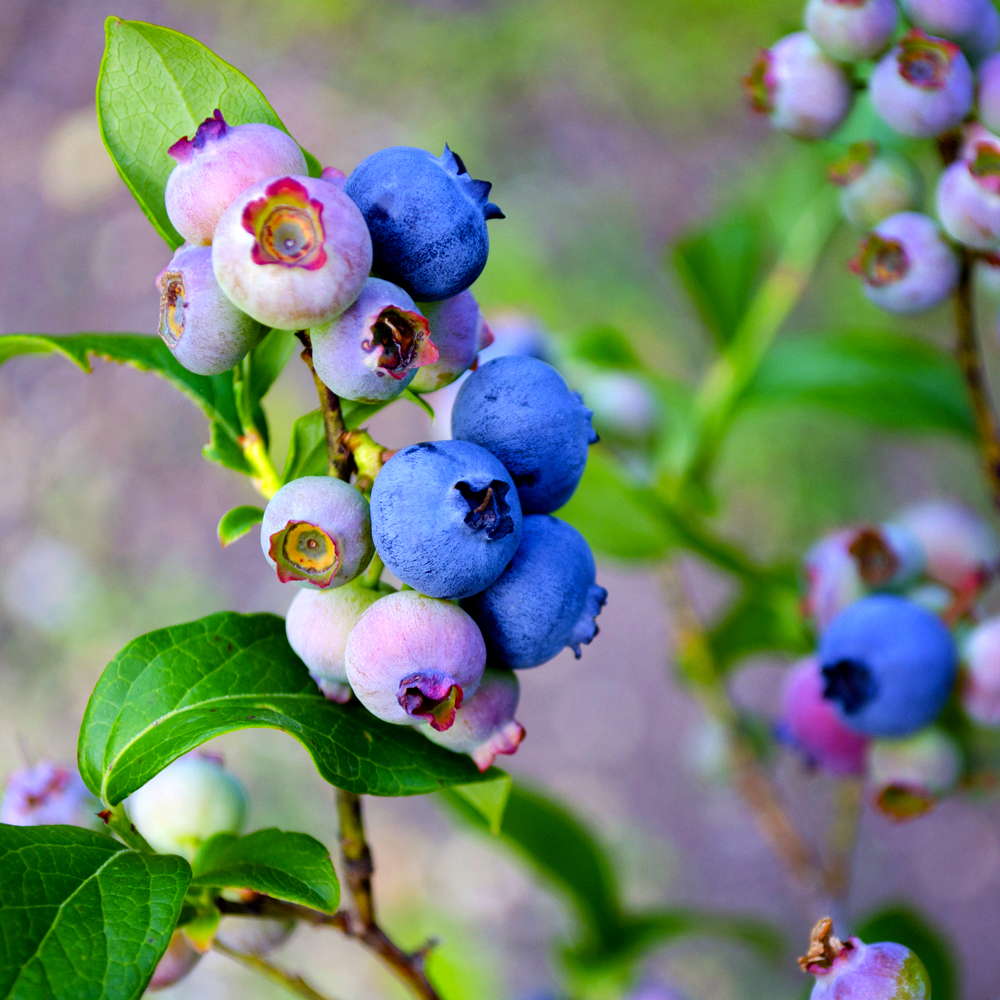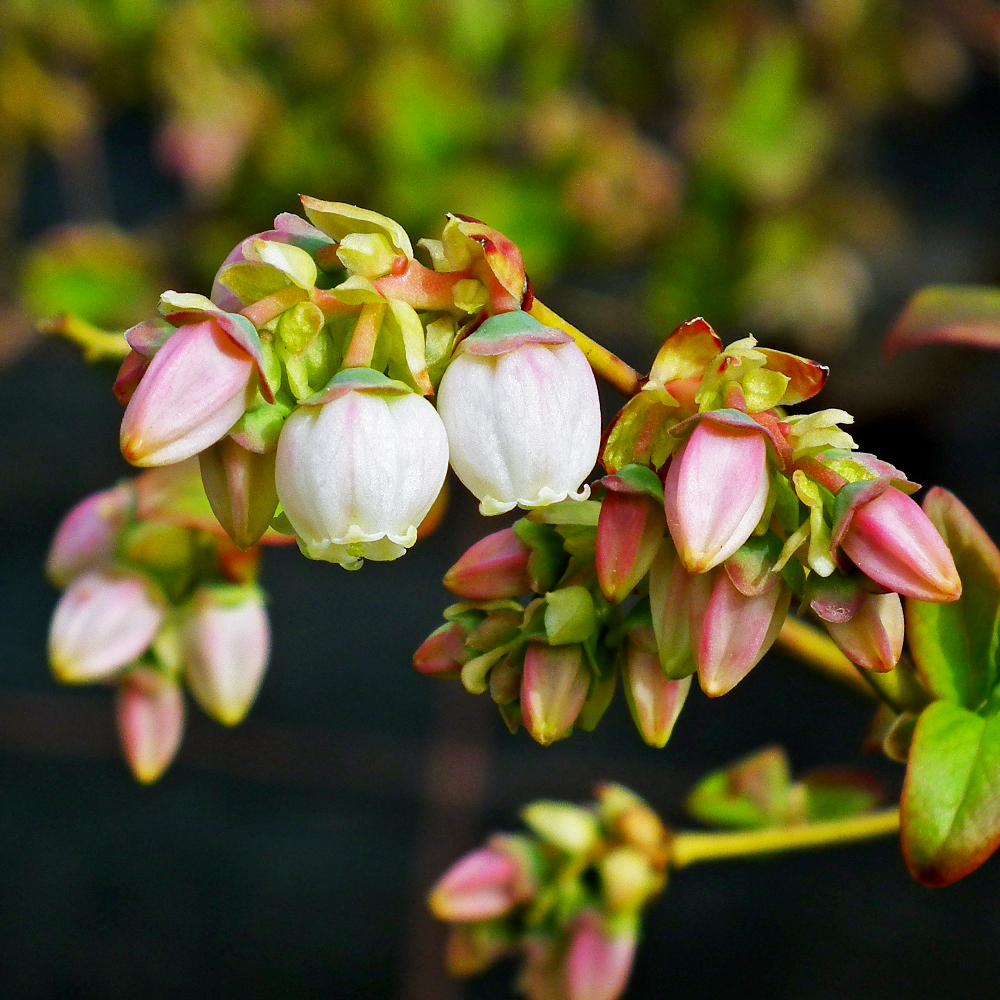Like blueberries? Who doesn’t? These tasty and delightful little blue fruits are a powerhouse of antioxidants and nutrition, promoting a healthy heart, reducing inflammation, and boosting brain function. But did you know that blueberries are relatively easy to grow, do not require much space, involve minimal care, and come in a myriad of varieties? Whether you’re looking for something sweet or tart, there’s sure to be a type that will suit your taste. Let’s begin our journey to harvest an abundance of juicy blueberries conveniently from just outside the door.
Northern Blueberries
Northern blueberries are native to North America and are the most common type of wild blueberry. These berries can be divided into two main types: highbush and lowbush.
- Highbush Blueberries (Vaccinium corymbosum), also known as hybrid or cultivated blueberries, grow on tall shrubs, about six to eight feet high. However, there are some compact varieties that grow three to four feet tall. Highbush are the blueberries most often grown commercially due to their larger size and yield. An added bonus is that due to their height, bending is not required to harvest. Plan on planting highbush blueberries four to five feet apart.
- Lowbush Blueberries (Vaccinium angustifolium), also called wild blueberries, grow on shorter shrubs, about two feet tall, and produce smaller yet highly flavorful berries. They are hardier than highbush and do well in a variety of soils as long as they are well-draining. Plan on planting lowbush blueberries two to three feet apart.
Planting
Blueberries may be planted in either the spring or fall, with the best availability being in the spring. YOUR GARDEN CENTER can recommend the most suitable highbush and lowbush varieties for your garden. Once you’ve made your selection, it’s time to plant. All blueberries have the same cultural requirements:
- full sun, but will tolerate light shade, well-draining soil, lots of organic matter, and acid soil.
Select an appropriate planting site and amend the soil with a generous amount of compost, but, most importantly, test your soil pH. Blueberries prefer a soil pH of 4.5 to 5.5. If your soil is too alkaline, YOUR GARDEN CENTER will recommend the type and amount of soil acidifier needed to adjust it. This process will take place over time so as not to shock the plant, but it is best done 1 year before planting. The addition of organic matter such as compost and peat moss will also help soil pH as well as drainage and soil nutrition.
Care
Water blueberries well after planting, and make sure that they receive at least one inch of water per week. Mulch the area around the bushes to keep the soil moist and weeds at bay. Do not feed blueberries at planting time, as the roots are sensitive to fertilizer. Once established, however, blueberry bushes should be fertilized two times a year: once in early spring and again in late spring. Use an organic product recommended for feeding Rhododendron and Azaleas.
Pruning
- Highbush blueberries – prune annually in late winter/early spring after the plant has been in the ground for about three years. Prune by removing about one-third of the oldest branches thicker than a pencil or that are sporting no new buds or flowers. This will help keep your plants healthy and promote vigorous new growth each season.
- Lowbush blueberries – should be pruned beginning in year six or seven. At that time, the plant may be cut back to the ground every two years to keep it vigorous and productive.
Tip
We love blueberries, and so do the birds! Draping bushes with bird netting at fruit set will ensure that you and your family enjoy the delicious berries and not our fine feathered friends. Growing blueberries in the home garden can be a rewarding experience, and with so many varieties to choose from, you are sure to find one that suits your needs. Whether you opt for high-bush or low-bush blueberries, both offer unique flavors and benefits that make them an ideal choice for any gardener.





 15% Military Discount
15% Military Discount